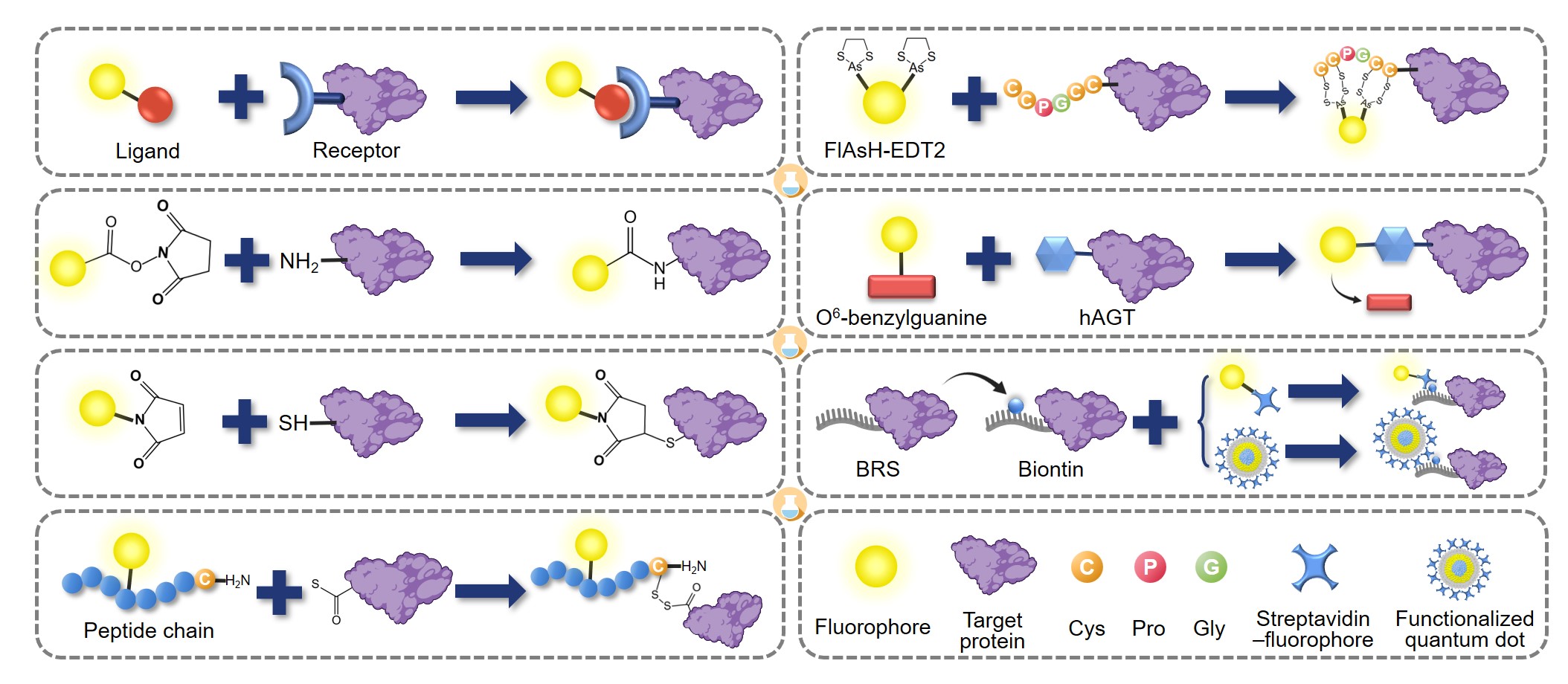Custom Protein-Fluorescent Conjugation Service
Protein-fluorescence conjugation is the most widely used method for imaging in biological experiments. With years of experience, our scientists at Creative Biolabs have developed a series of labeling methods to meet the specific needs of each customer with the best project design.
Protein-Fluorescent Conjugation Services
Fluorescence-based assays are basic tools in biological experiments to dissect molecular mechanisms in greater detail. The properties of high resolution and sensitivity enable real-time localization of proteins, conformational changes, enzymatic activities, interactions, etc. In fact, proteins have intrinsic fluorescence due to residues such as tryptophan. However, extrinsic fluorescent labels offer greater advantages for observing complex and multiple biological processes. For example, protein-protein interactions or conformational changes can be identified by measuring changes in fluorescence intensity and fluorescence/Förster resonance energy transfer (FRET). Based on our extensive experience and advanced platforms, we have the ability to recommend and provide the best protein fluorescent labeling service for our customers all over the world.
Fluorescent Small Molecule
A fluorescent small molecule refers to the compound with the chemical structure of a conjugated double bond system. When irradiated by ultraviolet light or blue-violet light, it can be excited to an excited state, and when it returns to the ground state from the excited state, it emits fluorescence. Commonly used fluorescent dyes, including fluorescein isothiocyanate (FITC), 7-amino-4-methylcoumarin (AMC), Rhodamine B, etc., can be conjugated to antibodies or proteins and detected by fluorescence imaging.
Fluorescent Protein
Fluorescent proteins are structurally homologous proteins whose 3 amino acid sequences in their polypeptide sequences can form chromophores with visible wavelengths. Different types of fluorescent proteins have been identified in natural organisms, such as bacteria, insects, and fish. The most important applications of fluorescent proteins are the localization and kinetic imaging of specific organelles or recombinant proteins in living cells.
Quantum Dots
Quantum dots (QDs) are very small nanoparticles made of semiconductor metal alloy. When exposed to light in a specific wavelength range, QDs are able to absorb energy photons and emit different colors of light depending on their size, shape, and composition. The unique optical and electronic properties allow them to be widely applied in different fields, including electronics, biology, and medicine.
Protein-Fluorescent Conjugates Method
Ideally, protein-fluorescent conjugation should be bright and stable without any disturbance to the biological system. Furthermore, the conjugation should be specific and not prone to oligomerization. However, it is very difficult to meet these standards at the same time, so new conjugation methods need to be continuously developed. Till now, there are a wide range of approaches for protein labeling. Flexibility in the choice of fluorescent labeling methods can provide more opportunities for different types of experiments. Moreover, a variety of cleavable linkers and non-cleavable linkers are all available.
 Fig. 1 Methods for fluorescent labeling of proteins.
Fig. 1 Methods for fluorescent labeling of proteins.
Creative Biolabs offers the most advanced and comprehensive protein-fluorescent conjugation services available today. We work to amplify your success in a highly collaborative manner. If you are interested in our services, please do not hesitate to contact us for detailed information.
Recommended products
Related Sections
